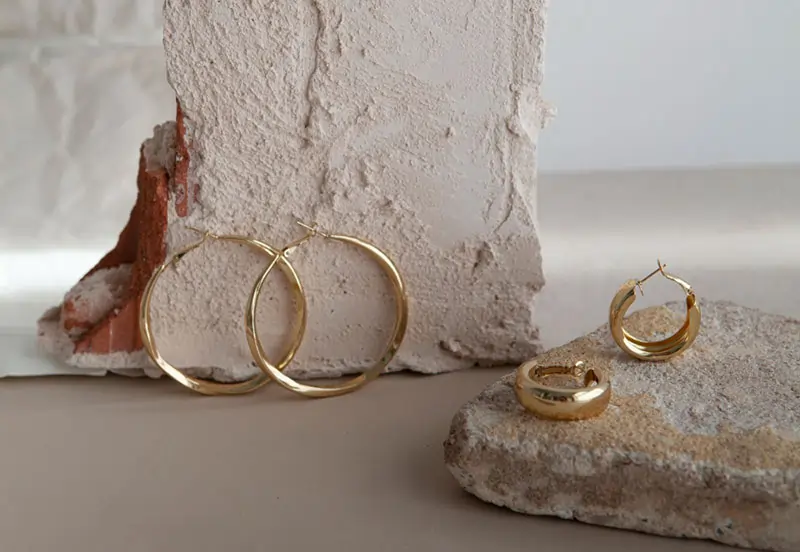How To Create Your Own Hand-Crafted Earrings From Start To Finish
Hand-crafting earrings is highly important to the jewelry industry. A handmade craftsmanship allows an artist to have this careful process as a prerequisite and allows for unique individuality, which stands out within what appear to be an endless myriad of mass product options in a market where that may be the majority. Although handcrafting leaves room for creativity, it also opens up the possibility of the creation of items and value to their owners that could be enjoyed over time, then cherished forever. With many more individuals looking for something unique and handmade, this has become something of a vital craft to master.
In this tutorial, you will learn to make handcrafted earrings piece by piece-from getting all the necessary materials and tools to the final touches. You will be guided on what tool would best suit the design you want, how to fashion your piece, and how to assemble everything in such a way that you can end up with great-looking, high-quality earrings. Each part will provide an overview of what you know and what you need to know to create attractive yet durable workpieces.
Gathering Materials and Tools
First, you would need to gather all the basic materials and tools required for you to begin making your earrings. Some of these are bead types, diverse thicknesses of wire, and hooks that will mirror your design. You can use beads made out of glass, metal, or even precious stones, which provide you with unending possibilities for creativity. You’ll also need key tools like round-nose pliers for shaping wires, flat-nose pliers for gripping, wire cutters for cutting, and a ruler for precise measurements.
By the right choice of material and tools, you will lay the best possible groundwork to hold and shape beautiful durable earrings. Whether you are a beginner or an experienced crafter, having the right supplies will make the process easier and more enjoyable.
Conceptualizing Your Design
Before you start making your earrings, take some time to plan your design. This means sketching out your ideas to create a final product that looks good and works well. Decide on the type of earrings—dangling, stud, or hoop—and use sketches to explore different shapes, sizes, and patterns. This step also helps you think about the materials you’ll use and how they’ll fit together.
By considering color schemes and balance now, you’ll create a more appealing piece. Both beginners and experienced crafters agree that planning helps avoid mistakes and makes the process smoother. So, taking the time to plan your design sets you up for a successful and enjoyable crafting experience.
Preparing the Materials
To make crafting easier, start by preparing your materials. Cut your wires to the right lengths with care to keep your designs balanced. Choose your beads thoughtfully, matching colors and materials for the look you want. Organizing your supplies ahead of time, like using small containers for different pieces, can greatly improve your efficiency.
By sorting hooks, spacers, and other parts, you reduce the chance of losing items and make assembly smoother. Whether you’re a beginner or experienced, careful preparation sets the stage for a smooth and enjoyable crafting session. Though it may take time, preparation prevents last-minute fixes and keeps your design process flowing smoothly.
Assembling the Earrings
Now that your materials are ready, it’s time to start assembling your earrings. Follow these steps to make sure everything fits well and the design is balanced. Start by threading beads onto the wires, adjusting them to be symmetrical. Use round-nose pliers to create smooth loops and keep everything secure.
Attach hooks and other findings, making sure all connections are strong. As you go, check the overall balance of the design. Paying close attention to detail and taking your time here will improve the quality and durability of your earrings. A careful, step-by-step approach will help you create beautiful, long-lasting pieces and make the process enjoyable.
Finishing Touches and Quality Control
As you reach the final stage, it’s important to focus on the finishing touches and quality control. Start by polishing your earrings with a small cloth to remove fingerprints and minor marks, giving them a nice shine. Check for symmetry and balance to ensure both earrings match in length and design.
Use your tools to make any needed adjustments, like tightening loops or aligning parts. Then, test their durability by gently tugging on different parts to make sure they’re sturdy. Depending on your experience level, you might focus more on how the earrings look or how well they’re built. Finally, inspect the earrings under good lighting to catch any missed details. A thorough quality check will ensure your earrings not only look professional but also last, making your hard work worthwhile.
Handcrafted earrings combined creativity, precision, and personal touch, resulting in unique pieces that distinguish them from others. As you hone your skill with earring making, attention to detail – from the choice of materials to the final touches – results in beautiful yet durable creations. Follow these steps and turn your ideas into wearable art that carries special meaning. No matter whether it’s to be made for yourself or whether you are one of the perfect gift-givers, your handmade earrings quickly become treasured possessions, with all the love and care put into the small detail.


